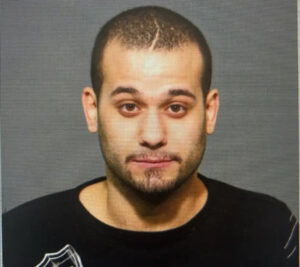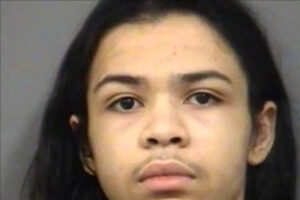On May 5th, 2006, in Geneva, Switzerland, law enforcement detained a 56-year-old individual on charges of credit card fraud, coincidentally on his birthday. This individual had deceived jewelry stores, amassing $250,000 through the purchase of high-end watches using counterfeit credit cards. His illicit activities had yielded a total of $400,000.
To Swiss authorities, he was initially perceived as a ‘small fish,’ but this was far from the truth. It didn’t take him much time to reveal that he was evading arrest for more severe offenses. Surprisingly, he requested to communicate with Canadian authorities, disclosing to the Swiss police that he operated as a hitman in the province of Quebec. Given the audacity of such allegations to the Swiss police, one might wonder if he had grown weary of being on the run. Could he have chosen not to divulge his identity as a hitman? Would the Swiss police have eventually uncovered his true identity?

However, a month later, on July 4th, the Sûreté du Québec (SQ) and the Service de police de la Ville de Québec (SPVQ), the Quebec City Police Department, dispatched investigators to Geneva. In the course of the interrogation, he admitted to several unresolved gangland murders spanning from 1978 to 2003. The investigators were taken aback, and promptly, the man was extradited back to Canada.
This revelation became the elusive piece of the puzzle—the individual authorities had sought since May 30th, 2001. On that fateful day, he unknowingly left behind his DNA on a Labatt 50 bottle in a Sainte-Adèle bar where he committed the murder of bar manager Yvon Daigneault and injured bar patron Michel Paquet. This incident led the police to initiate Projet Baladeur (Project Player). The lingering question remained: who was this elusive man?

His true identity: Gerald Gallant, a Quebecer hailing from the Chicoutimi sector of the Saguenay region. Born in 1950 into a tumultuous family, Gerald faced an abusive mother and a passive father who failed to intervene against the psychological abuse and blatant infidelity. Struggling with a stutter from a young age and encountering significant difficulties in school, Gerald eventually dropped out in the 5th grade. The ongoing psychological mistreatment by his mother exacerbated his struggles, rendering Gerald a highly timid individual. Surprisingly, his timidity did not hinder him from excelling as a career criminal; instead, it fueled his determination to commit crimes in the pursuit of acceptance.
In addition to his challenging upbringing, Gerald also grappled with rheumatism in one leg and a lifelong heart condition. Despite these health setbacks, tests conducted while he was incarcerated revealed that he possessed “above-average dexterity and digital coordination.” However, his IQ was below average, registering at 88. Surprisingly, this lower IQ did not translate into a lack of vigilance during the commission of his crimes; in fact, it seemed to have the opposite effect.

During his teenage years, Gerald became affiliated with a local gang known as the Cossacks. Despite his introverted nature, he actively engaged in petty crime as a means of seeking acceptance. One of his initial criminal endeavors involved stealing cigarettes from supermarkets and peddling them on the streets. Remarkably, his involvement in petty crime did not stop him from holding down various jobs. At the age of 18, he embarked on his first forgery by creating a driver’s license, despite the legal age requirement being 21 at that time.
Gerald’s transition into more serious criminal activities occurred during a 23-month sentence for theft at Chicoutimi prison. Upon his release in the summer of 1970, he aligned himself with a gang of bank robbers, elevating his criminal pursuits from theft and petty crimes to armed robbery. However, Gerald’s stint in this illicit endeavor was short-lived as he was swiftly apprehended and returned to prison. Merely two months after his release, he found himself in custody once again, this time for his involvement in the robbery of a Credit Union in Chicoutimi-Nord, resulting in a 3-year sentence.
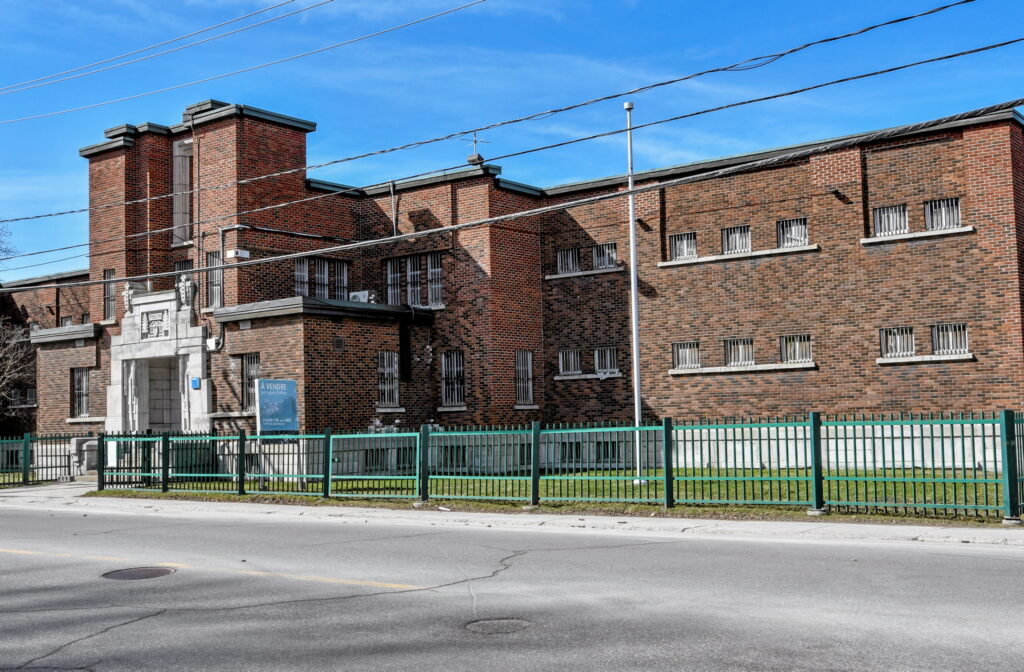
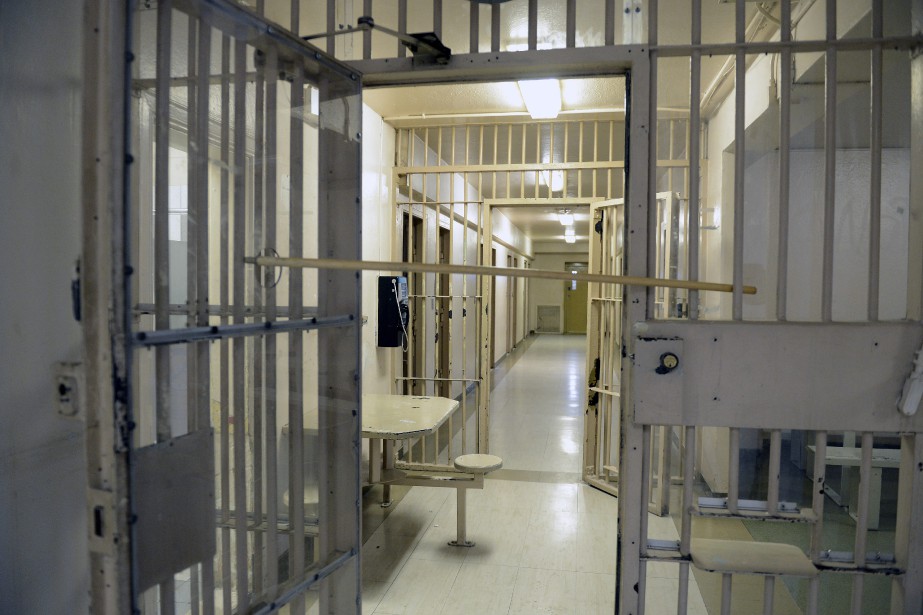

Following his release, Gerald quickly returned to his previous criminal activities, orchestrating an armed robbery of a jewelry store in Chicoutimi on October 24, 1973. In this heist, Gallant served as the designated getaway driver. However, when the police arrived, one of his accomplices, Gilles ‘Balloune’ Côté, initiated gunfire at the officers. Fearing the escalating situation, Gallant managed to successfully escape the scene.
‘Balloune’ was eventually apprehended after the robbery and the shootout with the police. Subsequently, he provided information to the authorities, revealing Gallant’s involvement as an accomplice in the robbery and his role as the getaway driver. Upon learning of Balloune’s cooperation with the police, Gallant decided to surrender himself. Strikingly, both were confined to the same detention wing at the Orsainville Detention Center.
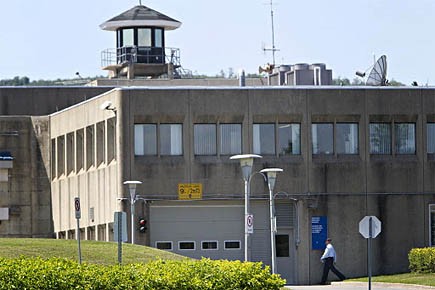
The decision to house both Gallant and Balloune in the same jail proved to be a significant error on the part of the authorities. Overwhelmed by paranoia that Gallant might, in turn, cooperate with the police against him, Balloune took it upon himself to plot the murder of Gallant while the two were confined in the same detention wing.

Seizing an opportunity, Balloune proceeded to strangle Gallant, though he only succeeded in rendering him unconscious. In a retaliatory move, Gallant replicated copies of Balloune’s prison paperwork, highlighting his role as an informant. Gallant then distributed these copies among fellow inmates. Unsurprisingly, the revelation of Balloune’s status as an informant did not bode well with the other inmates, leading to a significant backlash against him.
Ultimately, Gallant opted to plead guilty to his involvement in the failed robbery. On June 14th, 1974, he received a sentence of eight years in prison for his role in the botched criminal endeavor.
Repeatedly, prisons and penitentiaries have demonstrated that they often function more as crime schools than as institutions focused on rehabilitating inmates. With a substantial population of career criminals within these facilities, collaborations for future criminal endeavors are not uncommon. This pattern held true for Gallant, as evidenced by his initial decision to join a gang of bank robbers during his first prison stint. However, the trajectory of his criminal career took a significant turn when he encountered a man named Raymond Desfossés at Cowansville Penitentiary in 1975.

Raymond Desfossés hailed from Trois-Rivières, a city positioned along Autoroute 40 between Quebec City and Montreal. In the early 1970s, he joined the West End Gang, becoming an associate of the ‘King of Coke,’ Frank ‘Dunie’ Ryan, and later, Allan ‘The Weasel’ Ross, courtesy of his connections in Montreal.

Earning the moniker ‘The Cocaine King of Trois-Rivières,’ Raymond was also nicknamed ‘Trifluvien,’ a term referring to residents of Trois-Rivières.



By 1975, Desfossés had risen to a senior position within the West End Gang, exerting control over drug distribution within Cowansville Penitentiary, where he and Gallant were incarcerated concurrently. Gerald found himself involved in smuggling drugs for Desfossés, leading to encounters with prominent career criminals, including Raymond Bouchard, a lieutenant in Quebec City for the West End Gang.
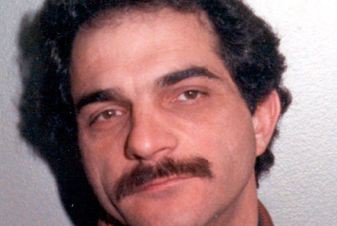
In September of 1978, Gerald secured parole and embarked on a new chapter of his life. He found employment as a tire fitter, earning a weekly income of $260. Settling in a mobile home in Port-Cartier, situated in the Côte-Nord Region near Sept-Iles, he shared his residence with his wife, Grassette, and their son. Later in life, Gerald asserted that he had no genuine emotional connection with his wife during that period and admitted to using the relationship solely to appease probation authorities.
In that same year, Gerald took a drastic turn by taking someone’s life. It wasn’t a contract killing, but rather a response to an employee of a strip club in Port-Cartier, Gilles Legris, assaulting a woman. On December 28th, Gallant, along with a former inmate who had served time with him at Saint-Vincent-de-Paul Penitentiary, beat Legris to death with iron bars. Subsequently, Legris’ body was disposed of in a dam in Sept-Îles.
Raymond Desfossés rekindled his collaboration with Gerald Gallant, this time involving free activities instead of smuggling drugs into prison. Gallant eagerly embraced the opportunity to work with Desfossés again, expressing admiration for him as a “big crime boss.” This renewed partnership eventually led to Gallant’s initiation into contract killings in 1980.
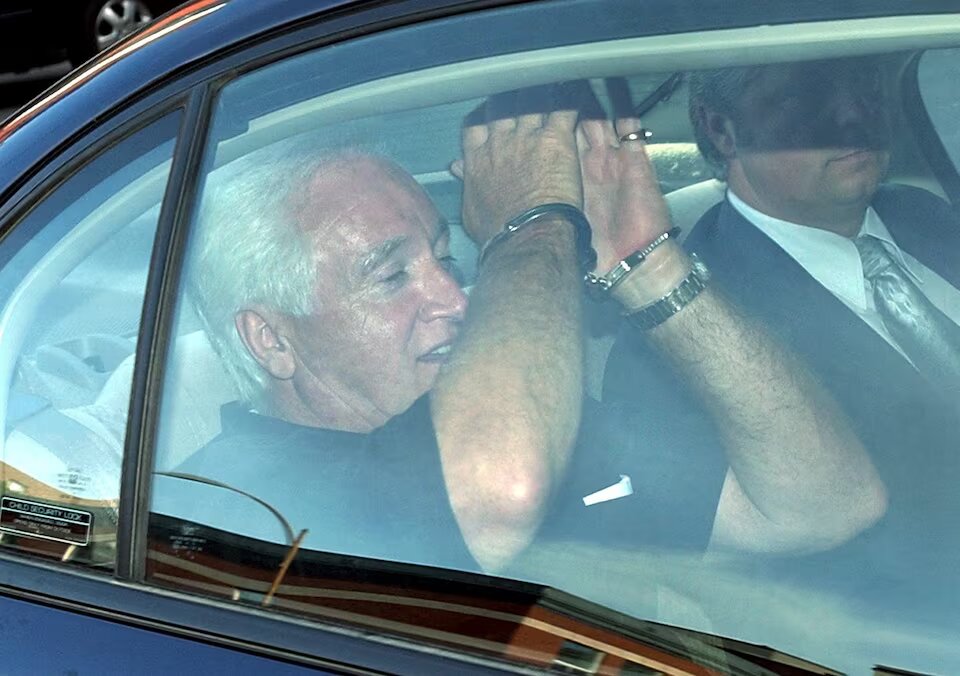
Desfossés harbored suspicions about whether a drug dealer, Louis Desjardins, associated with the West End Gang, was potentially collaborating with the police. Additionally, Desjardins owed a significant debt to the gang. Consequently, on January 30th, Gallant managed to lure Desjardins into his tire shop in Port-Cartier and fatally shot him in the head.
Subsequently, Gallant loaded Desjardins’ body into the trunk of his own Pontiac Firebird. Seeking assistance, he enlisted the help of his brother-in-law, Denis Gaudreault, to dispose of the body. Desjardins’ remains were later discovered in a ravine.
Desfossés harbored suspicions about whether a drug dealer associated with the West End Gang, Louis Desjardins, was potentially collaborating with the police. Additionally, Desjardins owed a significant debt to the gang. Consequently, on January 30th, Gallant managed to lure Desjardins into his tire shop in Port-Cartier and fatally shot him in the head.
Following the murder, Gallant loaded Desjardins’ body into the trunk of his own Pontiac Firebird. Seeking assistance, he enlisted the help of his brother-in-law, Denis Gaudreault, to dispose of the body. Desjardins’ remains were later discovered in a ravine.
In the course of 1980, Gallant reverted to his armed robbery history and seized an opportunity to rob a credit union alongside two accomplices. On August 28th, the Credit Union of Sainte-Marguerite in Trois-Rivières fell victim to a robbery, resulting in the theft of $169,000. However, Gallant’s celebration was short-lived, as law enforcement swiftly apprehended him shortly after the heist. Subsequently, on December 5th of the same year, he was sentenced to six years of imprisonment.
Arrested for the same robbery charge for the third time, Gallant made the decision to become an informant, cooperating with the SQ in exchange for a reduced sentence. André Hardy, his SQ handler, focused primarily on gathering information about Raymond Desfossés, sending numerous associates of Desfossés to prison over the years. Gallant received a payment of $45,000 from the SQ for his cooperation, all while continuing to engage in contracting and criminal activities right under their noses.
One notable individual impacted by Gallant’s information was Gérard ‘Maggy’ Hubert, a gay hairdresser from Cap-de-la-Madeleine. Hubert had assisted Gallant in robbing a bank in Vancouver, resulting in a $125,000 haul in 1985, and was also involved in eight murders. Despite their criminal partnership, Gallant referred to Hubert as his ‘Siamese twin.’

Upon his release from prison, Gallant resumed his criminal activities, particularly taking murder-for-hire contracts orchestrated by Desfossés. His third murder and second contract killing occurred in the fall of 1982 when he, accompanied by accomplice Gilles Dubois, murdered André Haince near Québec City. The contract was issued by Desfossés, who paid Gallant $5,000, and Marcel Lefrançois, a massage parlour owner, who paid an additional $3,000.
Although he received 8,000$, he was promised 20,000$ with the remaining 12,000$ being owed by Marcel Lefrançois. Gallant decided to aim his sight on Lefrançois, literally, committing a drive by shooting with a Browning Auto-5 on February 16, 1984 in the Sainte-Foy sector of Quebec City. Lefrançois was only wounded from the shooting, but eventually succumbed to his injuries three days later. This murder was not contracted by Desfossés, but the coke kingpin was aware of the murder, supplying Gallant with the driver for the crime by the name of Réjean-Claude Juneau.
Gallant and Desfossés both became suspects in the murder of Haince and were questioned by SQ agent Georges Richard. While Desfossés denied any involvement in the killing, Gallant provided a false narrative, claiming he had heard that the job was carried out by two individuals, one from Montreal and the other from Trois-Rivières. Haince’s body was eventually discovered in Saint-Romuald in 1986.
Continuing his criminal career, Gallant carried out a series of contract killings and criminal activities, often orchestrated by Desfossés. Despite having a low IQ, Gallant displayed a calculated approach to his hits, employing preventive measures such as buying oversized shoes to confuse investigators analyzing footprints and using stolen license plates on vehicles.
In 1985, driven by a desire for revenge, Gallant planned an assassination against Gilles ‘Balloune’ Côté. However, he aborted the mission when he saw Côté with a child, opting to spare the child from witnessing the violence. Gallant carried out the hit the next day, with accomplice Philippe Côte, shooting Côté 30 times with a .455 caliber revolver.
Salvatore Luzi, a co-owner of the Million Dollar Night Club whom he co-owned with Allan ‘The Weasel’ Ross, gang leader of the West End Gang and heir to Frank ‘Dunie’ Ryan, was the next target. Ross had suspected Luzi or skimming profits from the night club. On May 28th, in 1990, Gallant stumbled upon Luzi’s house in Lorraine, a town on the north shore of Montreal. He noticed the residence had a realty sign on the lawn, the house was up for 360,000$. He concurred a plan, he was going to gain entry to the residence by knocking on the door and pretending to be an interested buyer. The plan worked and Gallant shot Luzi in the head, 3 times with a .22 revolver. Luzi was mortally wounded and sent to the hospital, he died three days later. Gallant was paid 10,000$ for the hit by Desfossés.
Throughout the late 1980s and early 1990s, Gallant executed contract killings roughly every 1-2 years, charging between $10,000 and $20,000 depending on the target. His targets included witnesses set to testify in court cases, individuals suspected of skimming profits, and those involved in altercations with crime bosses.
Despite a heart attack and a bypass surgery in 1992, Gallant made a swift recovery and continued his career as a hitman. In 1993, he performed more contract killings for Desfossés, including the murder of Pierre Langlois, a Quebec City pub owner, and Dominic Paquet, shot in front of an ice cream parlor in Limoilou. Gallant’s ability to blend into society, maintain a family life, and even hold a job as a butcher contributed to his ability to avoid suspicion and continue his criminal activities.
Gallant’s next victims included Guy ‘Bretzel’ Laflamme in 1994 and Guy Lévesque in 1995, casualties in the Quebec Biker War. Gallant would receive contracts and weapons from Rock Machine leaders Frederic Faucher and Marcel ‘Le Maire’ Demers when they would meet at the Basilica of Sainte-Anne-de-Beaupre, a church outside of Quebec City.


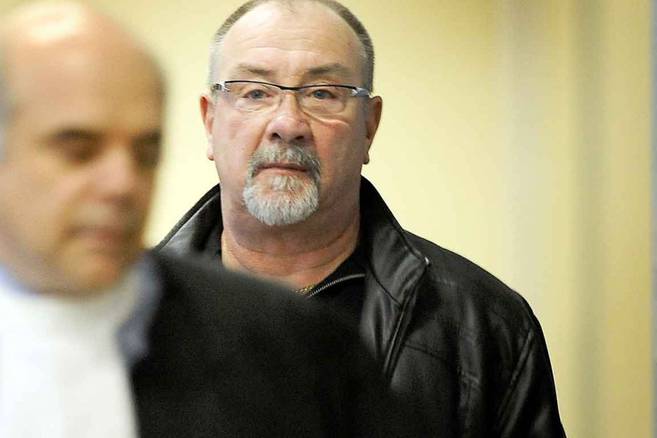
Gallant’s involvement in the biker war between the Hells Angels and the Rock Machine marked a crucial phase in his criminal activities. In 1996, he gunned down Bruno ‘Cowboy’ Van Lerberghe, a Hells Angels member, at a restaurant in Quebec City. Gallant continued to take contracts from Faucher and Demers.
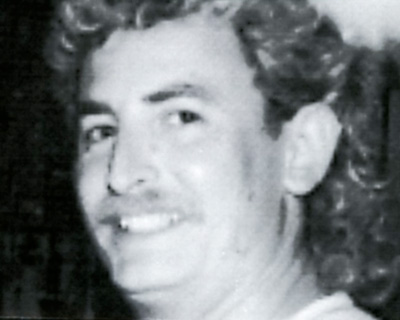
In the mid-1990s, Gallant’s was crucial to the Quebec City chapter of the Rock Machine MC, making him a key player in one of the bloodiest conflicts in Quebec’s criminal history. The biker war resulted in 162 casualties over eight years, from 1994 to 2002.
Throughout his criminal endeavors, Gallant displayed a sense of morals, sparing a target when accompanied by a child, but had a penchant for revenge. Despite his role as a hitman, he maintained a personal set of principles within the criminal underworld.
Gallant’s criminal activities became more intertwined with his personal life as he developed a relationship with Jacqueline Benoit in 1995. Despite being married to Claudine Bertrand, Gallant and Jacqueline engaged in an extramarital affair that evolved into a Bonnie and Clyde partnership. Surprisingly, Jacqueline not only accepted Gallant’s role as an assassin in the Quebec Biker War but actively assisted him with planning hits.

One notable target was Denis Lavallée, a hotel manager who allowed only Hells Angels members to sell drugs in the Donnaconna Hotel. On April 8, 1997, Gallant shot Lavallée in his office at the hotel.
Jacqueline’s involvement in the criminal activities escalated when she participated in the surveillance for a hit ordered by Marcel Demers. The target was Louis ‘Mélou’ Roy, a high-ranking Hells Angels member. On August 23, 1997, Gallant attempted to carry out the hit in Jonquière, but the mission failed as Roy survived the attack. Despite the failure, Demers still paid Gallant $20,000.

In another contract, Raymond Bouchard hired Gallant to eliminate Hells Angels associate and drug dealer Alain ‘Lulu’ Leclerc. Accompanied by Gérard ‘Maggy’ Hubert, Gallant successfully executed the hit on November 17, 1997, in a restaurant in Quebec City.
The year 1998 proved to be a busy one for Gallant as he committed five murders. Jacqueline assisted in two of these contracts, targeting Alain Bouchard, an H.A. associate and drug trafficker, on February 10, 1998, and Pierre ‘Pete’ Simard on September 8th, 1998.
Marcel Demers had his sights set on Paolo ‘Paul’ Cotroni, the son of the Montreal Mafia boss Frank Cotroni. Paolo had started doing business with the Hells Angels, sealing his fate. On August 24, 1998, Gallant, accompanied by Gérard ‘Maggy’ Hubert, successfully executed Paolo outside his Repentigny home. Demers paid them $20,000 for the hit.

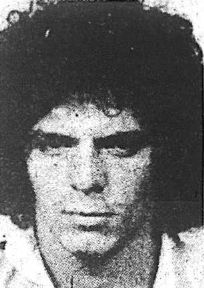
Jacqueline’s last involvement as an accomplice was in the murder of Pierre ‘Pete’ Simard, ordered by Raymond Bouchard. On September 8, 1998, Simard was shot five times in the head as he left his girlfriend’s apartment in Limoilou. Gallant paid Jacqueline for her role in the hit.
In 1999, Gallant accepted a contract to assassinate Hells Angels Quebec City member Jonathan Robert. Unfortunately, the hit went wrong, and an innocent man, Luc Bergeron, was killed on January 7, 1999.

The pinnacle in Gallant’s life was probably when was offered a contract to kill notorious HA nomad, Maurice ‘Mom’ Boucher. Surprisingly, it was not Demers or Faucher that ordered the hit, although they contributed to paying it. It was West End Gang Raymond Desfossés. By that time Desfossés was starting to support the Rock Machine MC. There was also Raymond Bouchard who had ordered hits on associates of HA. Desfossés offered 250,000$ for the contract, with 10,000$ in advance, paid by Marcel Demers. While Gallant was conducting surveillance, he noticed Boucher got a hair cut everyday at the same salon on Sainte Catherine’s Street in Montreal. The only problem was Boucher was always surrounded with 2 or more bodyguards and it deemed very difficult for Gallant to carry out the hit. Finally, the contract was called off due to massive police surveillance on him.

The last three of Gallant’s hits were very unfortunate events, where the hit turned sideways and innocent people got hurt, or just straight out gruesome.
On the 7th of July, Gallant and his ‘Siamese twin’, Gerard ‘Maggy’ Hubert performed a hit in a Montreal-Nord restaurant of HA associate and loan shark. The target was Savard who had been dining with Norm Descôteaux. While in the heat of the gun smoke, Hubert and Gallant started to aim at Descôteaux, who grabbed waitress Hélène Brunet, and used her as a human body shield. Brunet survived four gunshots to the arms and legs, while Descôteaux also survived being shot. The Quebec Biker War ended in 2002 when both sides called a truce. The Rock Machine MC in Quebec eventually dissolved with members patching over to Bandidos MC. The Rock Machine MC are still present in multiple chapters around different countries in the Eastern world, and Western world.
History repeats itself, especially in the case of Gallant, when he killed another innocent civilian and wounded a client in a bar in Sainte-Adèle. Gallant killed bar manager Yvon Daigneault and wounded Michel Paquette. The target was Claude Faber, who was largely in debt with Desfossés, owing him a quarter million dollars. Desfossés put out a contract on Faber, supplying Gallant with the wrong license plate. The very exact same luck he had when he mistakenly killed private detective Luc Bergeron in Sainte-Foy. To top it all off, this is where he left his fingerprints on a bottle of Labbatt 50 beer, and this is the incident that started Project Baladeur (Project Player).
On the 12 of March, 2003, Gallant and Denis Corriveau dismember led a body in a garage in the town of Sainte-Helene-de-Breakeyville. They would later incinerate the body, piece by piece, and put the ashes in an empty gallon-sized paint which was filled with tar. The body belonged to Christian ‘Le Prince’ Duchaine, the brother of Bertrand Duchaine who had survived two attempts on his life by Gallant in 1990 and 1993. Le Prince and his uncle, Jean Claude Gagné, wanted revenge and was conspiring to kill Gallant and Desfossés. Or, atleast he was told by Raymond Bouchard. Gallant got to him before any of that happened.
The unintended consequences of his actions began to unfold, resulting in the death and injury of innocent individuals. Realizing that the police were onto him, Gallant decided to go on the run and eventually fled to Switzerland in 2006.
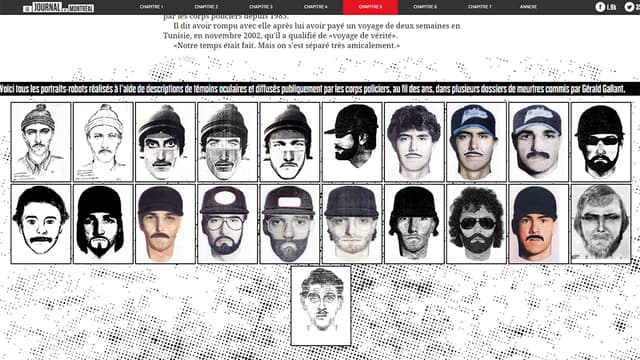
Gerald Gallant’s criminal activities eventually caught up with him, and upon his return to Canada and extradition, he turned into a crown witness. His cooperation with Projet Baladeur, supplying crucial information, led to the arrests of several individuals involved in organized crime. Raymond Bouchard, who had been involved in 16 murders, Frederic Faucher with 7 murders, Marcel Demers, and Raymond Desfossés were among those sentenced.

In 2009, Gerald Gallant himself faced the consequences of his actions and was handed 48 life sentences with no possibility of parole until 2033. The legal system acknowledged the severity and extent of his criminal activities by imposing a substantial prison sentence. This marked the end of Gallant’s reign as a contract killer and his involvement in the Quebec Biker War.




